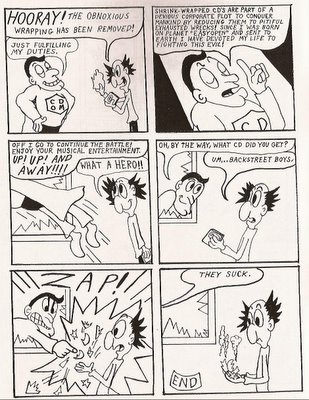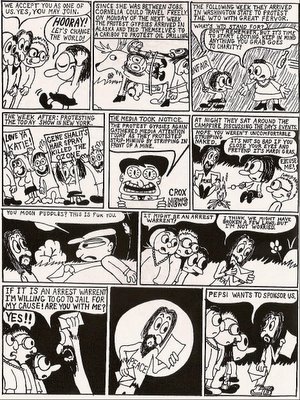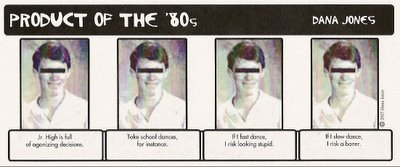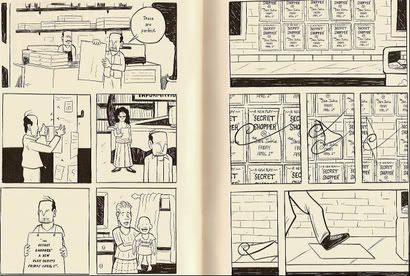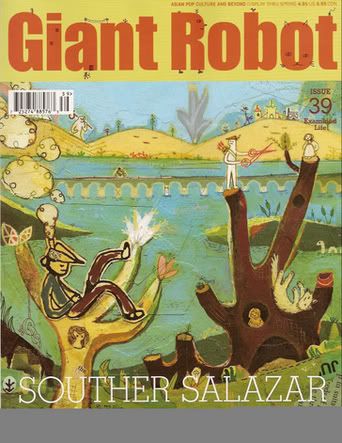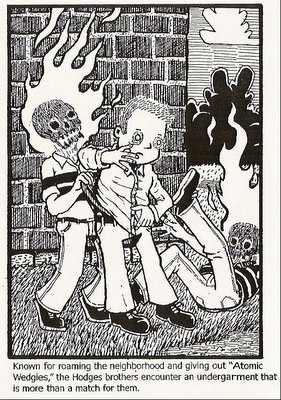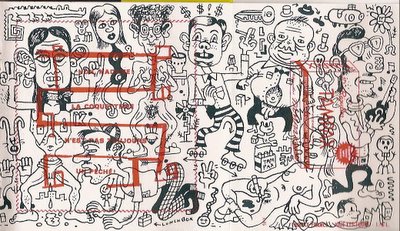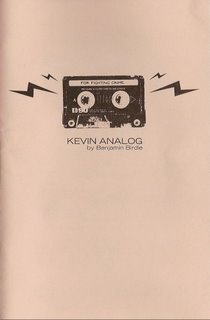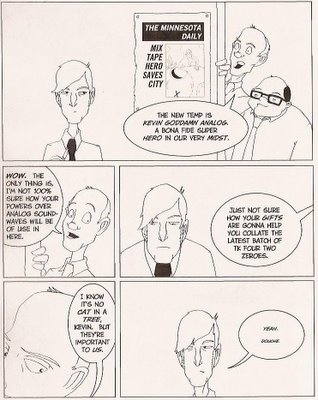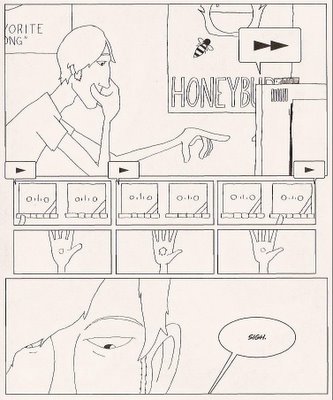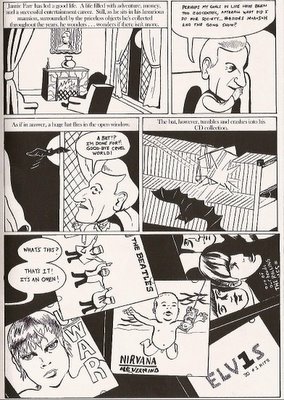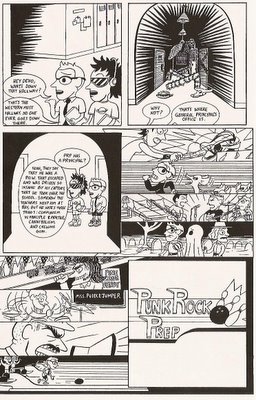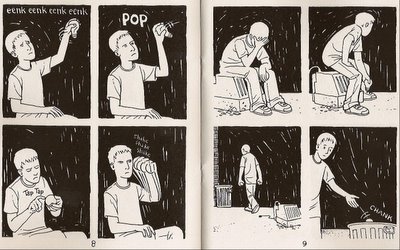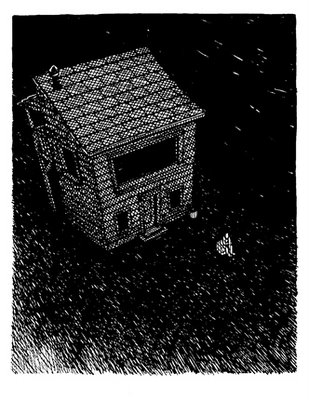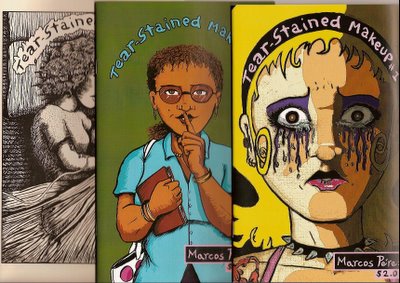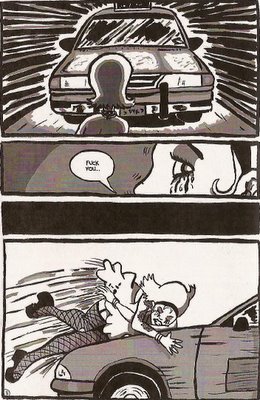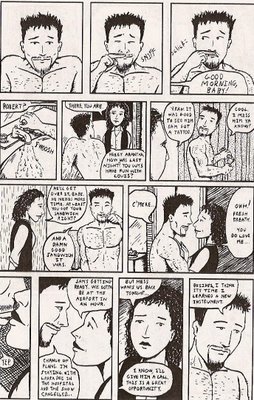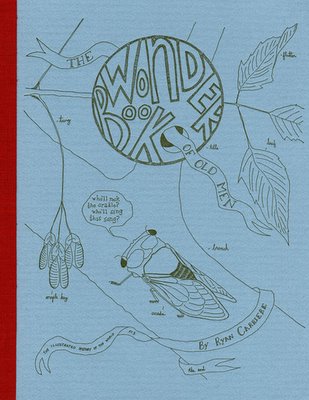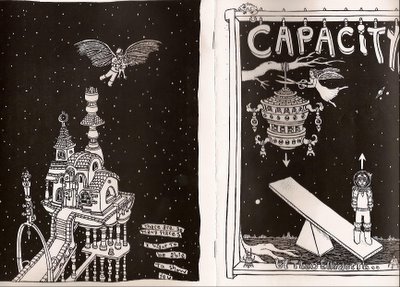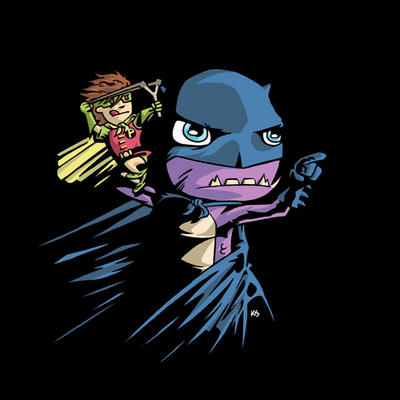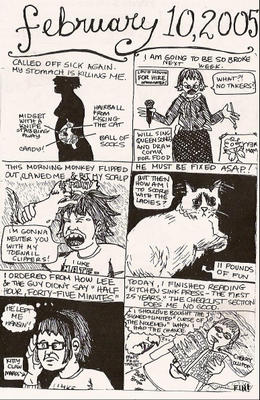Ed Piskor’s Twisted World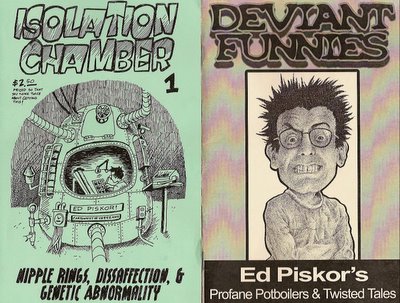
Man, poor Ed Piskor. Yeah, the guy has drawn art for Harvey Pekar and he has some mad drawing skills, but some weird shit goes down at the Casa Piskor.
Let's start with his daily sketch mini-comic,
Isolation Chamber, where he discovers pictures of his parents online – at a swinger website. Think about that one for a moment. Just let it sink in a bit. Stings a bit doesn’t it. Well, Ed has a hard time with this, even though his friends tell him not to sweat it. If that’s not enough, he gets bifocals, thinks that he’s being crowded out of a group interview with a group of cartoonists, and suffers through interminable waiting to see the Pekar book come out.
Isolation Chamber is a packed twenty pages of loosely sketched panels. The art isn’t as meticulous as his other work, but then again it isn’t supposed to be. He’s just jotting down a few panels each day. Each page has at least nine text- heavy panels, so it takes some time to sit down and read this mini; certainly much more time than you would spend with your average comic pamphlet from the big publishers. I’ll be honest, Piskor often comes across as whining in this journal comic, but there’s just enough here to keep it interesting. You’ve got to find out if he confronts his parents, and you’re a little bit worried about his friend’s new nipple ring. That thing doesn’t look good at all.
There’s one panel in particular that captures the Piskor’s humor best. The dad walks in and asks him why he’s up at 2:00, and Piskor mumbles to himself, “Toothless Dirk Diggler Mother Fuck.” The guy loves his dad, but you can tell his discovery is driving him nuts.
Deviant Funnies: Ed Piskor’s Profane Potboilers & Twisted Tales is a nicely drawn mini-comic under an unattractive cover. The straight jacketed grinning figure is a little off putting, but things simmer down inside. There are twenty-four pages roughly divided into five sections. The first thing that strikes you is that Piskor draws really well here. He works at a level of detail that you don’t often see in self-published mini-comics. You’ll notice an insane level of intricate cross hatching that almost rivals Joe Sacco’s comics. This adds to the depth of each panel and helps set the tone for the stories.
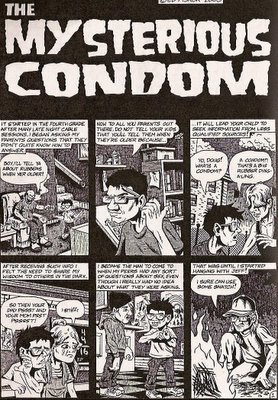
Among the tales that stand out is “The Mysterious Condom,” in which Little Ed tries to bluff his way through conversations about sex with his peers. The character designs here remind you a little of Rick Altergott’s
Doofus, as the kids appear more like tiny adults rather than children. Little things stand out in this story, like the tears on the girl's face as little Ed describes what her parents do when the lights go out at night.
Three shorter pieces, “Not So Rude Awakening” is only a page, also shine in this issue. “Awakening” details waking up to a phone call from Harvey Pekar, who tells Piskor, “Quit calling me ‘sir.’ Speak easy, man.” The story “Endurance Test” follows a guy who takes the key from a pair of handcuffs, mails it to himself, and then locks himself to a radiator in his apartment. The backgrounds are less dense here, as the character and his plight become the only focus. Piskor is able to keep your attention by using facial expressions, exaggerated movements, and the ridiculousness of the situation. It’s not easy to successfully spend forty panels on a guy sitting next to a radiator, but he does.
In a sinister unnamed and almost wordless story, a local kid out fishing with a friend falls out of the boat and drowns. Later he comes back to life and haunts an unlucky couple who live by the lake. Since the entire tale takes place at night, Piskor drenches the pages in atmospheric black ink. The reflection of the moon on the lake and the white of a fire’s flames add to the creepiness.
After reading such a solid first issue, the second issue,
Deviant Funnies: The Wizmantles, fell slightly short of expectations. The art is excellent throughout, but the characters are sometimes so grotesque it almost hurts to look at them. If Piskor is going for the Basil Wolverton crowd, he nails it. In one panel, the acne-cursed sister lifts a can to her mouth to take a drink; when she pulls the can away, the puss from her pimples kind of strings from her chin to the can. Shudder.
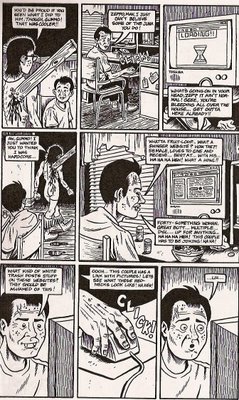
The story of the Wizmantles is the tale of Gummo Wizmantle discovering his parent’s pictures on a swinger website. This should be familiar to readers of
Isolation Chamber. Gummo is appropriately horrified, and he goes to his friend for advice. The friend is relieved, “Phew, I’m glad you brought that up, Gummo…I saw your parents naked on the computer months ago.” Poor Gummo tracks his parents to a seedy motel room and watches them through binoculars, as he stays hidden behind some trees.
“The Wizmantles” is the lone story of the second issue of
Deviant Funnies. It’s solid and often very funny, but it feels too familiar for a reader that just finished Piskor’s
Isolation Chamber where he spends pages talking about the same subject. You can’t blame him though, that’s a goldmine for autobiographical comics. Read this without reading
Isolation Chamber first, and
The Wizmantles is comical and cringe inducing. I didn’t post the picture of the mother lying on her stomach in a G-string on the rug, or the picture of the father posing in tiny briefs by the toilet.
At the end of the story, you’ll find a two page letter from Gummo to his parents. He explains the difficulty that his discovery caused him, and warns them, “Everytime you piss me off I print up 20 more copies of this.”
Isolation Chamber is twenty pages for $2.50.
Each issue of
Deviant Funnies is $3.00.
I didn’t notice a website, but you can email Ed at wimpyrutherford@hotmail.com
You can order Ed’s comics from the awesome
Copacetic Comics. The guys at Copacetic have
Deviant Funnies available for $2.50 each.



